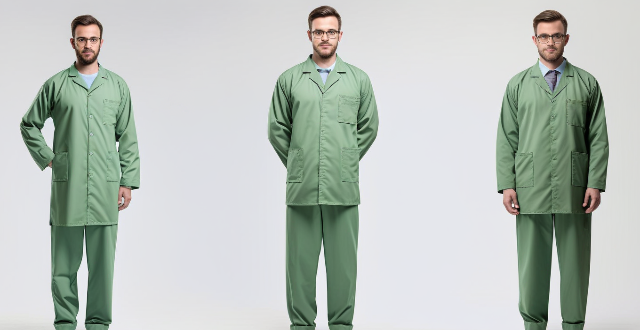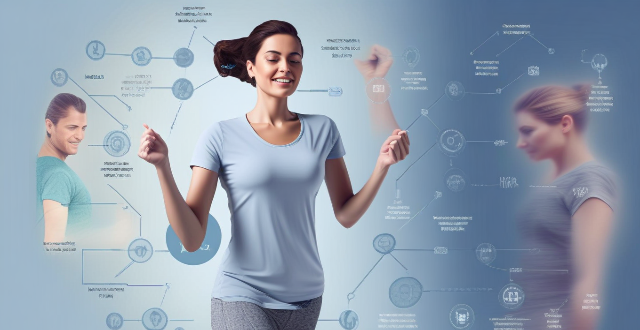Using Exposure

What are the most effective ways to protect against radiation exposure ?
Radiation exposure can be harmful to our health, and it is essential to take measures to protect ourselves from its effects. Here are some of the most effective ways to protect against radiation exposure, including using shielding materials, maintaining a safe distance, wearing protective clothing, following safety guidelines, getting regular check-ups, eating a healthy diet, and staying informed.

How does PPE protect against chemical exposure in industrial settings ?
In industrial environments, workers are often exposed to hazardous chemicals that can pose significant health risks. Personal Protective Equipment (PPE) plays a crucial role in safeguarding these workers from potential harm. This article delves into the various types of PPE and how they protect against chemical exposure. Types of PPE for Chemical Protection include respiratory protection such as filtering facepiece respirators, powered air-purifying respirators, and self-contained breathing apparatuses; skin and eye protection like chemical-resistant gloves, aprons and suits, and goggles and face shields; and foot protection like chemical-resistant boots. PPE works against chemicals by forming a physical barrier between the worker and the chemical, absorbing or adsorbing chemicals before they reach the user, and isolating the user completely from the external environment. Best practices for using PPE include ensuring proper fit and comfort, regular inspection and maintenance, and comprehensive training and education on how to use PPE effectively. The correct use of PPE is essential for the safety of workers in industries where chemical exposure is a risk. Employers must ensure that appropriate PPE is provided, maintained, and used correctly to create a safer work environment.

How can we reduce our exposure to harmful chemicals in everyday life ?
In today's world, it is nearly impossible to entirely avoid exposure to harmful chemicals. However, there are several steps we can take to significantly reduce this exposure and protect our health. Here are some practical tips: - Choose natural products for food, beverages, personal care, and cleaning agents. - Avoid plastic by using glass or stainless steel water bottles, storing food in glass containers, and opting for reusable alternatives for straws and cutlery. - Create a healthier home environment by choosing furniture made from natural materials, maintaining good air quality, and selecting natural fabrics for clothing and decor. - Wear clothing made from organic cotton or other sustainable materials, be mindful of dyes and finishes used in clothing, and use natural or eco-friendly detergents for washing clothes. - Choose non-toxic cookware and BPA-free plastic containers for food storage. - Limit the use of electronic devices that may emit EMFs, especially before bedtime, and consider wired headphones over wireless ones to reduce exposure to Bluetooth radiation.

How do hazmat suits provide protection against chemical exposure ?
Hazmat suits, also known as chemical protective clothing or chemical resistant suits, are specialized garments designed to protect wearers from hazardous materials. These suits offer a high level of protection against chemical exposure by creating a barrier between the wearer and the environment. The key features of hazmat suits include their material, design, breathability, and comfort. The article discusses how hazmat suits provide protection against chemical exposure in detail, including the levels of protection offered by different types of suits.

How can we reduce our exposure to ionizing radiation from medical procedures such as X-rays and CT scans ?
This article discusses strategies to reduce exposure to ionizing radiation during medical procedures. It covers preparation before the procedure, such as informing your doctor about prior radiation exposure and discussing alternative imaging options. During the procedure, it suggests using lead shielding appropriately, optimizing machine settings, and limiting the number of exposures. After the procedure, it recommends following up with your doctor and monitoring for any side effects related to radiation exposure. Additionally, it provides lifestyle choices to minimize overall radiation exposure, such as staying informed about environmental radiation sources and limiting consumer products that could contain radioactive materials.

Are there any health risks associated with wearing a fitness tracker ?
The article discusses potential health risks associated with wearing fitness trackers, including radiation exposure, skin irritation and allergies, and distracted driving. It provides tips on how to minimize these risks, such as limiting exposure time, choosing low-power modes, using hypoallergenic materials, adjusting the fit properly, giving skin regular breaks, turning off non-essential features before driving, using Do Not Disturb mode, and putting the phone away while driving.

How can we protect ourselves from radiation exposure during space travel or living on other planets ?
Radiation exposure is a significant concern for astronauts during space travel and for future settlers on other planets. Shielding, distance, time management, and medication and supplementation are effective ways to protect against radiation. Lead, concrete, and water are good shielding materials. Distance from the source of radiation reduces exposure. Time management involves limiting the duration of exposure. Antioxidants, amifostine, and melatonin may help protect against radiation damage by reducing oxidative stress and promoting DNA repair.

How do different types of sports sponsorship (e.g. title sponsorship, kit sponsorship) affect a company's brand exposure ?
This text discusses various types of sports sponsorship, including title sponsorship, kit sponsorship, venue sponsorship, event sponsorship, and team sponsorship. Each type offers different impacts on brand exposure, such as high visibility, brand association, targeted audience reach, community involvement, and potential for success sharing. Overall, sports sponsorship provides companies with opportunities to align themselves with the excitement and passion of sports, reaching diverse audiences and enhancing their brand image.

How do I take stunning landscape photos using my iPhone ?
To take stunning landscape photos using your iPhone, focusTo take stunning landscape photos using your iPhone, focus the rule of thirds and play with perspectives, and mind details such as color palette and moment timing. Post-process with editing apps and accessories like a tripod or external lenses for improved results.

What are the best settings for shooting in low light conditions with an iPhone ?
This comprehensive guide provides a detailed overview of how to optimize iPhone camera settings for low-light photography, including preparation tips, specific camera settings, composition techniques, and post-processing suggestions. It emphasizes the importance of clean lens maintenance, stabilization, and the strategic use of Night mode, manual focus, exposure control, ISO adjustments, burst mode, and HDR settings. The guide also suggests looking for natural light sources, experimenting with angles, and using long exposure apps. Post-processing advice includes adjusting exposure and brightness, reducing noise, and boosting color and contrast to enhance image quality in low light conditions.

What are the benefits of using a makeup palette for a quick look ?
The text discusses the advantages of using a makeup palette for a quick look, highlighting its convenience, time-saving features, versatility, cost-effectiveness, customization options, space-saving benefits, and hygiene. It emphasizes that makeup palettes are compact, all-in-one solutions that can streamline beauty routines, offer pre-designed looks, and allow for mix-and-match creativity. They often provide better value than buying products individually, reduce waste, and can be customized or refilled. Palettes also save space, declutter vanities, and are easier to clean, maintaining hygiene levels. Overall, using a makeup palette enables achieving a quick, polished look with minimal effort.

What are the benefits of using hidden features in iOS ?
The text discusses the benefits of using hidden features in iOS, including enhanced user experience, increased efficiency, access to experimental features, troubleshooting and problem-solving, and advanced customization. However, it also warns that using these features should be done with caution as they may not work as intended or could potentially cause issues with the device if not used properly. It is recommended to research and understand the feature thoroughly before enabling or using it, and to back up important data before making any significant changes.

What role does lighting play in capturing the perfect food photo ?
The role of lighting in food photography is crucial for capturing the perfect photo. Key aspects to consider include color temperature and mood, directionality and shadows, intensity and exposure, background and ambiance, and experimentation and creativity. Warm lighting enhances warm, comfort foods while cool lighting complements cold dishes like salads or seafood. Natural light provides soft, even illumination while artificial light allows for more control over directionality. Bright lighting captures vibrant colors but can cause overexposure, while dim lighting creates a moody effect but may require longer exposure times. Simple backgrounds with subtle lighting accents allow the food to be the main focus, while elaborate setups incorporate additional lighting elements for an immersive dining experience. Experimenting with multiple light sources and using reflectors and diffusers can achieve a balanced and pleasing result. Mastering lighting techniques can elevate food photos from ordinary to extraordinary.

What are some tips for taking great landscape photos with a smartphone ?
Taking stunning landscape photos with a smartphone involves planning, mastering camera settings, careful composition, and mindful editing. Research your location, check the weather, use mapping apps to plan your shot. Understand your camera's capabilities, use HDR mode, and manual controls for better exposure and focus. Follow the rule of thirds, look for leading lines, include foreground interest, and simplify your composition. Pay attention to lighting, especially during golden hour, and be mindful of exposure to avoid blown-out highlights or blocked-up shadows. Edit your photos thoughtfully, adjusting color temperature, enhancing details, and applying filters sparingly. By following these tips, you can capture breathtaking landscape photos that showcase the beauty of nature through your smartphone's lens.

How do I avoid getting sunburned during my island vacation ?
The text provides tips on how to avoid getting sunburned during an island vacation, emphasizing the importance of using high SPF sunscreen, seeking shade, wearing protective clothing, being mindful of reflective surfaces, staying hydrated and nourished, and knowing personal limits in terms of sun exposure. It highlights that sunburns can be painful and dangerous due to skin's exposure to ultraviolet rays from the sun. The tips aim to help individuals enjoy their vacation without the discomfort and risks associated with sunburns.

How does protective clothing protect against radioactive substances ?
Protective clothing shields wearer from radiation exposure by acting as a barrier between them and the radioactive substance. Shielding materials used, such as lead or other heavy metals, reduce the radiation's intensity and prevent it from reaching the body. Thickness and density of the material are crucial in determining protection level. Maximum coverage area is necessary, including all skin surfaces and extremities. There are two main types: disposable (single-use) and reusable (can be cleaned and reused). Levels of protection vary depending on expected radiation exposure. Proper maintenance and care ensure effectiveness over time.

What are the harmful effects of chemicals on human health ?
Chemicals can have harmful effects on human health, affecting various systems in the body. Short-term exposure to chemicals can cause irritation of the respiratory system, increased heart rate and blood pressure, headaches, dizziness, and confusion. Long-term exposure to chemicals can lead to chronic bronchitis, emphysema, lung cancer, coronary artery disease, heart failure, stroke, neurological disorders, memory loss, and mood disorders. It is essential to be aware of the potential harmful effects of chemicals and take necessary precautions to protect our health.

What are some common misconceptions about radiation and how can we address them ?
The text discusses common misconceptions about radiation and offers ways to address them. It clarifies that not all types of radiation are harmful, with ionizing radiation being potentially damaging to cells' DNA and non-ionizing radiation generally considered safe at low levels. The text also explains that while some forms of radiation can increase the risk of cancer, not all types lead to cancer development. Additionally, it points out that radiation exposure can be acute or chronic, and its effects may not be immediately apparent. Finally, the text emphasizes that the danger associated with radiation depends on several factors, including the type of radiation, the amount of exposure, and the duration of exposure.

Can protective clothing be reused after being exposed to chemicals or biological agents ?
The reusability of protective clothing after exposure to chemicals or biological agents is determined by factors such as the type of garment, nature of contaminants, and level of exposure. Potential risks include inadequate decontamination, material degradation, and cross-contamination. Best practices for handling and disposal involve immediate removal, proper storage, appropriate decontamination processes, and safe disposal methods like incineration or landfill disposal according to local regulations. Adherence to these practices is crucial for maintaining safety and preventing further contamination.

How often should chemical protective gear be replaced or maintained ?
Chemical protective gear is essential for workers exposed to hazardous chemicals. The frequency of replacement or maintenance depends on the type of gear, level of exposure, and manufacturer's recommendations. Regular visual inspections and testing are crucial to ensure that the gear remains effective and safe. By following the manufacturer's guidelines, workers can minimize their risk of exposure to hazardous chemicals and protect their health and well-being.

How can I stay safe while using mobile banking apps ?
The text provides a detailed guide on how to ensure the safety of personal and financial information while using mobile banking apps. It suggests downloading apps from official app stores, keeping them updated, setting up multi-factor authentication, using strong passwords, being cautious with public Wi-Fi, monitoring account regularly, not saving log-in details, and being wary of phishing scams. These measures can significantly enhance the security of mobile banking activities and protect financial information from potential threats.

What are the benefits of using green packaging ?
Using green packaging has become increasingly popular in recent years as people have become more aware of the environmental impact of traditional packaging materials. Green packaging refers to eco-friendly and sustainable packaging solutions that are designed to reduce waste, conserve resources, and minimize pollution. Here are some of the benefits of using green packaging: Reduced Environmental Impact: - Lower Carbon Footprint: Green packaging materials often require less energy to produce than traditional materials, resulting in a lower carbon footprint. - Biodegradable and Recyclable: Many green packaging options are made from biodegradable or recyclable materials, reducing the amount of waste that ends up in landfills. - Reduced Pollution: Green packaging helps to reduce pollution by minimizing the use of harmful chemicals and toxins in the production process. Cost Savings: - Long-Term Cost Efficiency: While green packaging may initially be more expensive than traditional options, it can lead to long-term cost savings due to reduced waste disposal costs and increased efficiency in production processes. - Tax Incentives and Grants: Many governments offer tax incentives and grants for businesses that implement eco-friendly practices, including the use of green packaging. Improved Brand Image: - Enhanced Corporate Social Responsibility (CSR): Using green packaging demonstrates a commitment to sustainability and social responsibility, which can enhance a company's reputation and appeal to environmentally conscious consumers. - Increased Customer Loyalty: Consumers who value eco-friendly practices are likely to choose products with green packaging over those with traditional packaging, leading to increased customer loyalty and sales. Innovation and Creativity: - Stimulates Innovation: The need for sustainable packaging solutions encourages companies to invest in research and development, leading to innovative new products and processes. - Design Flexibility: Green packaging materials can often be molded into unique shapes and sizes, allowing for greater creativity in product design. Health Benefits: - Reduced Exposure to Harmful Chemicals: Green packaging materials are often free from harmful chemicals and toxins, reducing the risk of exposure for both consumers and workers involved in the production process. - Improved Food Safety: Eco-friendly packaging materials can help maintain food quality and safety by preventing contamination and extending shelf life.

Are there any health concerns related to using AirPods for extended periods of time ?
Apple's AirPods are popular wireless earbuds with potential health concerns, such as noise exposure and ear fatigue from long-term use. However, these risks can be minimized by keeping volume at a reasonable level, taking breaks, ensuring proper fit and hygiene, and choosing the right size ear tips. Radiation concerns are not significant due to low levels of electromagnetic radiation emitted by Bluetooth technology. Overall, following guidelines for safe and comfortable use can make AirPods a viable option for extended periods of time.

What role does government regulation play in ensuring safe levels of radiation exposure for the public ?
Government regulation is essential for ensuring safe radiation exposure levels by setting standards, licensing facilities, conducting inspections, educating the public, investing in research, preparing for emergencies, and collaborating internationally to manage radiation risks effectively.

How does protective clothing work to prevent exposure to hazardous materials ?
Protective clothing shields wearers from hazardous materials through barrier materials, sealed enclosures, breathability features, and disposability. Its effectiveness depends on proper training, fit, maintenance, and responsible disposal practices.

How can I stay motivated while using online learning resources ?
To stay motivated while using online learning resources, oneTo stay motivated while using online learning resources, one create a study plan, find By following these tips, one can make the most of their online learning experience and achieve their desired outcomes.

Can using certain feminine hygiene products cause infections or irritation ?
"Can Using Certain Feminine Hygiene Products Cause Infections or Irritation?": This article explores the potential risks associated with using various feminine hygiene products, including infections and irritation. It provides tips on how to prevent these risks by choosing appropriate products, practicing good hygiene, and consulting a healthcare provider if necessary. The article emphasizes the importance of using these products correctly and mindfully to maintain personal hygiene without compromising one's health.

What is the significance of using chopsticks in Chinese dining etiquette ?
Using chopsticks in Chinese dining etiquette is significant for various reasons, including respect for tradition, table manners, hygiene, fine motor skills, and social interaction. Chopsticks have been used in China for thousands of years and symbolize harmony, balance, and unity. Proper use of chopsticks demonstrates good table manners and avoids certain taboos associated with their usage. Using chopsticks also helps maintain cleanliness at the table by avoiding direct contact with hands to mouth and allows multiple people to share dishes without directly touching the food. Mastering the art of using chopsticks takes practice and patience, demonstrating dedication to learning about Chinese culture and customs. Proper chopstick etiquette facilitates smooth social interactions during meals and creates a shared dining experience among guests.

In what ways can we improve rechargeable battery efficiency ?
Improving rechargeable battery efficiency involves using high-quality chargers, avoiding complete discharges, storing at optimal temperatures, using fast charging techniques sparingly, and maintaining proper battery care. These practices help maintain battery health, ensure efficient charging, prevent damage, and extend the battery's lifespan.

Are there any special safety precautions I should take when working with an internal rotor motor ?
The text discusses safety precautions for working with internal rotor motors. The key points include wearing appropriate personal protective equipment (PPE), disconnecting the power source before starting work, using insulated tools and gloves when working with live electrical components, using proper lifting techniques and equipment when moving heavy motors or components, avoiding contact with moving parts while the motor is running, handling lubricants or coolants carefully to avoid spills or skin contact, storing chemicals in a well-ventilated area away from heat sources and ignition sources, following proper disposal procedures for waste materials generated during maintenance or repair work, working in a well-ventilated area to minimize exposure to fumes or dust, using vacuum cleaners or other collection devices to capture debris and minimize cleanup time, and disposing of hazardous waste materials according to local regulations and guidelines.